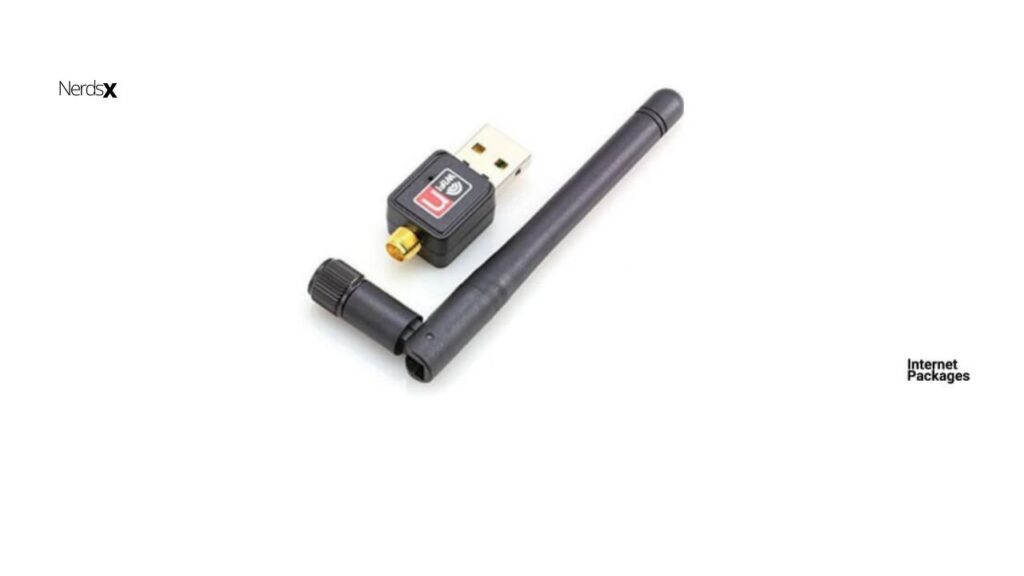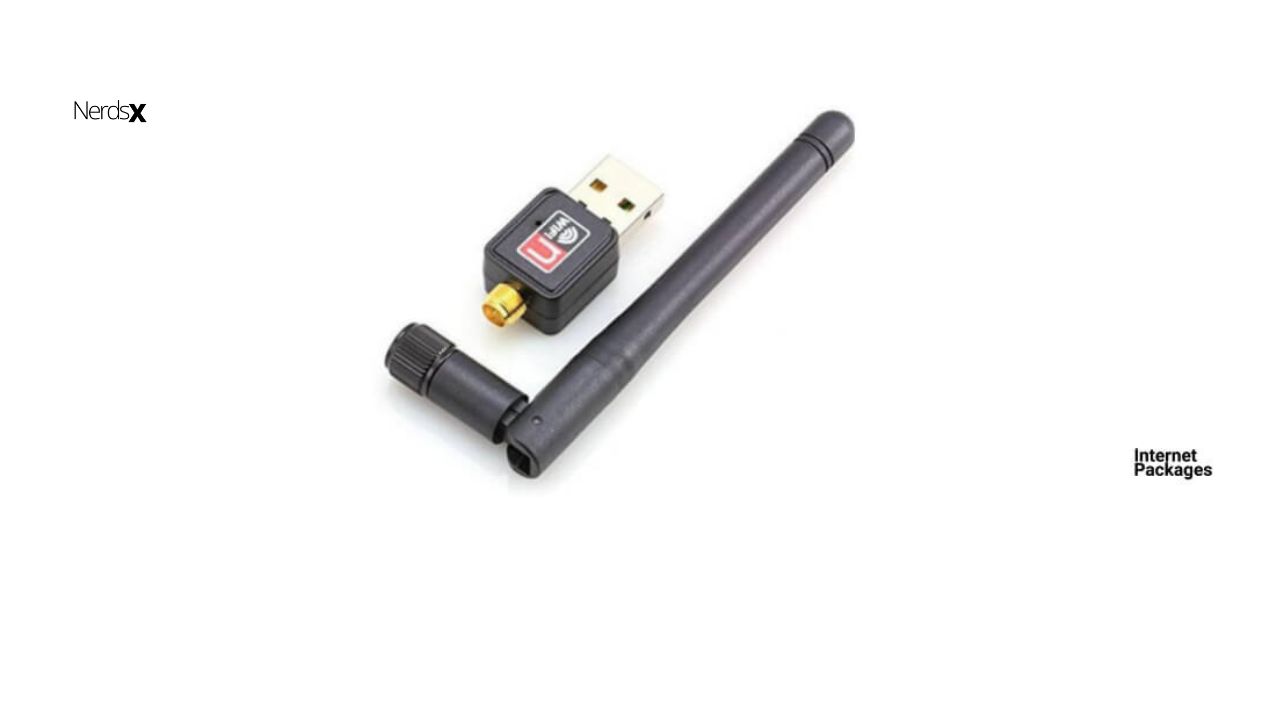Here are the steps on how to fix a wireless adapter not working in Windows 7, 8, and 10, in a more concise way:
- Restart your computer.
- Check if your wireless adapter is turned on.
- Update your wireless adapter drivers.
- Reinstall your wireless adapter drivers.
- Run the Windows Network Diagnostics tool.
- Check if your wireless network is turned on and in range.
- Try connecting to a different wireless network.
What Is a wireless Adapter?
Wireless adapters are devices that connect to a wireless network, enabling you to connect your computer or another device to the internet.
Wireless adapters are also known as wifi adapters, wi-fi adapters, etc. These devices are essential for anyone who uses a laptop/desktop PC on the go. They have an antenna on them so they can connect to a wireless router without the need for cables.
Windows 7 does not come with a wireless card by default, so it is important for users to use a wireless adapter. Wireless adapters allow Windows 7 to connect to the internet and other networks without having the computer be physically connected to them.
Wireless adapters are becoming more and more popular as companies realize how much they benefit their customers. They also provide an easy way for companies to expand their range of products because now they can offer increased network speed and increased connection speed without having to invest in additional infrastructure.
Fix Wireless Adapter For Windows 7
If you are using a Windows 7 computer and you have a wireless adapter, it can often be difficult to get the device to work on this version of the operating system. This includes not being able to connect to a wireless network or even seeing a network on your computer at all. The good news is that there is a troubleshooting trick that can help fix these issues.
The first step is to uninstall any antivirus software. Next, go into Device Manager by searching for “Device Manager” in the search bar of your Start menu and clicking on it once it appears. Make sure Network Adapters are highlighted and double-click on them so they have their own window open. Right-click on each one of these devices and select Uninstall from the context menu that appears. After doing this for all adapters.
If your wireless network adapter stops functioning in Windows 7, here are a few things to try.
1. Check the health of the adapter: Go to Device Manager and open the Network Adapter section. If a yellow warning icon appears next to its name, follow this guide for troubleshooting steps on how to fix it.
2. Update your drivers: Ensure that you have all the updates installed for your wireless network adapter and that your drivers are up-to-date. On Windows 7, go into Device Manager > Network Adapters > right-click on your wireless network adapter and select Properties > Updates tab > Driver tab > Apply Driver button
3. Disable any other devices associated with it: In Device Manager, open the Network Adapters section and right-click on your wireless network adapter again.
4. Start your computer in Safe Mode.
5. Uninstall all of the following programs: Intel PROSet Wireless; Microsoft Wireless Display Adapter; Microsoft Wireless Lan; Microsoft WiFi Miniport Adapter (this can be found under device manager).
6. Restart the computer in Normal mode and check if the issue still persists.
7. If it still does not work, then uninstall all the updates and reinstall the Wifi drivers from Microsoft’s official site.
Fix Windows 10 Wireless Problems With A Few Easy Steps
Windows 10 comes with a wide range of features to help you get the most out of your computer. But sometimes, wireless connection problems crop up – especially when new features are being introduced.
If you are having difficulties connecting to a wireless network on Windows 10, here are some easy steps that might help you fix the problem.
1. Check for new updates on your computer by clicking the Start button, then select Settings > Update & Security > Windows Update > Check Now button.
2. Make sure that your router is also updated with the latest firmware or software upgrade.
3. Restart your router and devices connecting to it by turning them off and back on again one at a time till finally fixing the issue.
4. Ensure that your router is not blocking the wireless connection. Most routers have a setting for this, so try turning it off first.
5. Use your computer to search for other wireless networks that are close to your current location and connect with them instead of the one you’re currently connected to. If there are no other networks nearby, then disconnect from the current one and reconnect again after 5 seconds. The 5 seconds break any sort of handshake or connectivity issue between the two devices, which is often what causes these problems in the first place.

Best Solutions For Wireless Adapter Not Working In Windows 8.1 And 8.1 RTM Builds
If you’re facing issues with a wireless adapter not working in Windows 8.1, try these detailed solutions:
- Restart Your Computer:
- A simple restart often resolves connectivity issues.
- Update Wireless Drivers:
- Ensure your wireless drivers are up-to-date. Download the latest drivers from the manufacturer’s website and install them.
- Check Hardware Switch or Button:
- Some laptops have physical switches or buttons to enable/disable wireless. Ensure it’s turned on.
- Use Windows Troubleshooter:
- Run the built-in Windows Network Troubleshooter to identify and automatically fix common wireless adapter problems.
- Check Device Manager:
- Open Device Manager, locate the wireless adapter, right-click, and choose “Update driver.” Also, check for any driver-related issues.
- Reset TCP/IP Stack:
- Open Command Prompt as an administrator and type “netsh int ip reset” followed by “netsh winsock reset” to reset the TCP/IP stack.
- Disable and Re-enable the Adapter:
- In Device Manager, right-click on the wireless adapter and choose to disable. Wait a moment, then enable it again.
- Reinstall the Wireless Adapter:
- Uninstall the wireless adapter in Device Manager, restart your computer, and let Windows automatically reinstall the drivers.
- Check for Windows Updates:
- Ensure your operating system is up-to-date by checking for and installing any available Windows updates.
- System Restore:
- If the issue started recently, perform a system restore to revert your system to a previous state where the wireless adapter was working correctly.
- Check for Interference:
- Ensure there’s no interference from other electronic devices. Adjust the channel settings on your router to reduce interference.
- Test on Another Network:
- Connect to a different Wi-Fi network or use a wired connection to check if the issue is specific to your network.
5 Tips On Windows 10 Network Interface Cards & Ethernet Adapters & Wired Ethernet Connections – Troubleshooting Tips
This article will discuss 5 tips on Windows 10 Network Interface Cards & Ethernet Adapters & Wired Ethernet Connections.
Troubleshooting Tips:
1. Check what driver is installed for your network adapter.
2. Check the version of the driver that is installed for your network adapter.
3. Check which driver you should use based on your network connection.
4. Update the drivers for your Ethernet connection to ensure compatibility with Windows 10.
5. Make sure that the Ethernet cable is properly connected to both devices and to a power outlet with no problems.
For the past few years, Wired Ethernet connections have been used extensively in homes, offices, and larger buildings. However, this backup connection is still backup for a reason. If you are experiencing slow performance or intermittent connectivity with your wired Ethernet connection, it may be worth checking your network card settings for this particular issue.
7 Major Wireless Adapter Issues With Windows 7 You Need To Know about
Some wireless adapter drivers may not be installed automatically or installed incorrectly because of Windows 7 errors or incompatibility issues. This article discusses five major wireless adapter issues with Windows 7 that you need to know about before you buy a new one.
Windows 7 has wireless drivers that are not compatible with all wireless adapters. This may be because of hardware or software limitations. Some people might need to upgrade their computer’s hardware to work with newer wireless adapter models.
Before you continue, make sure you have updated your computer’s motherboard and BIOS settings. Ensure that any 3rd party drivers are updated too. Once done, try connecting your wireless card again and see if it works now. You can also try running the Windows Wireless Adapter Troubleshooter in order to fix the issue on your own device if it still doesn’t work after updating its drivers and BIOS settings.
In this article, we will discuss 7 major wireless adapter issues with Windows 7 you need to know about.
1. The system tray icon only shows the available networks
2. You can’t connect to a network while it’s already connected to a different one
3. The wireless signal is inconsistent
4. Your computer is broadcasting a beacon signal for others to see your network name/password/etc
5. You can’t connect to or view your saved networks from your laptop or tablet
6. Drivers not installed on your machine: As things stand, Microsoft doesn’t offer drivers for many wireless adapters outside of the ones they make themselves. However, there is a workaround that will allow you to use an external driver software as well as drivers from your manufacturer. For this particular issue, I recommend using Driver Fusion. The software will let you know if the drivers have been installed properly and even offer to install them for you if they’re not already there.
7. Issue with wifi card: If the WiFi card is malfunctioning or doesn’t seem to be working, please contact your local Computer Servicing area.
Conclusion: Find Your Perfect Wireless Adapter Now!
The wireless adapter market has become more competitive in the last few years, but if you are looking for a reliable, affordable option, the TP-Link N300 Wireless Portable USB Adapter is your best choice. This adapter can stream your favorite shows or movies in high definition without having to worry about losing signal strength. The small size of the adapter will fit in any backpack or purse, so you can take it with you wherever you go. The low price of this wireless adapter is definitely worth the investment.
References:

